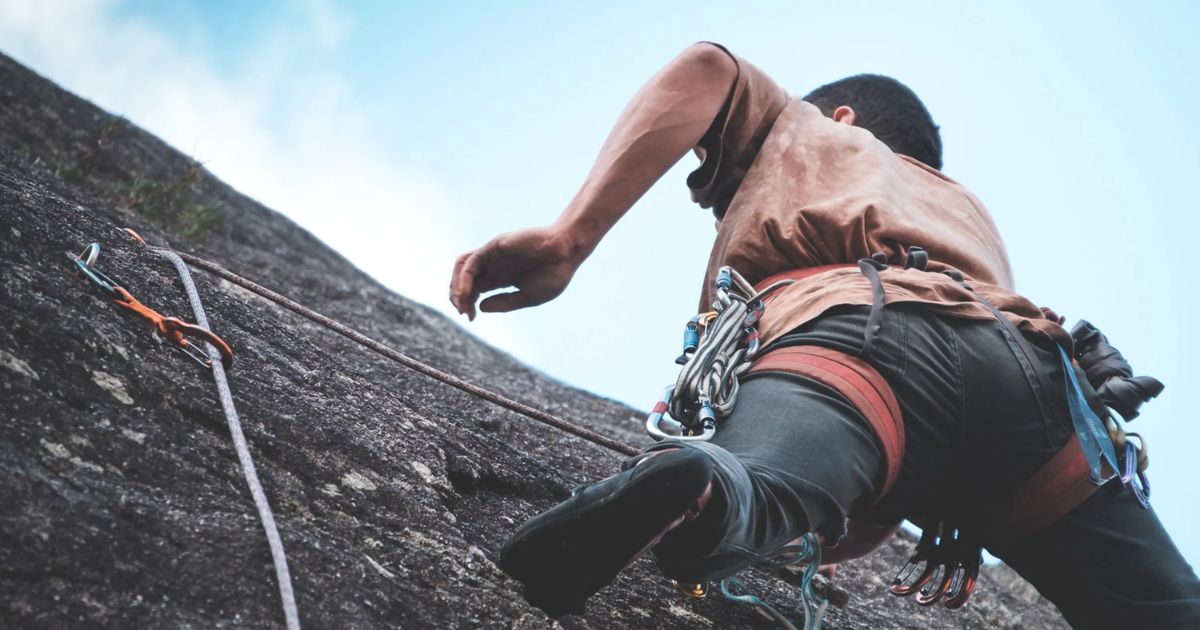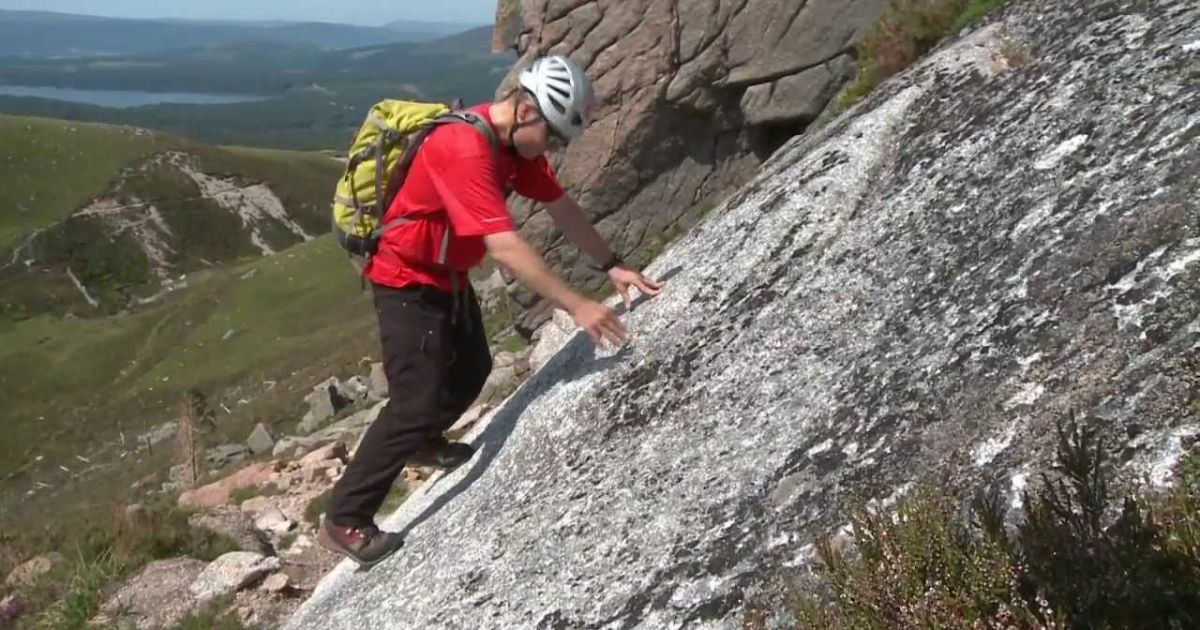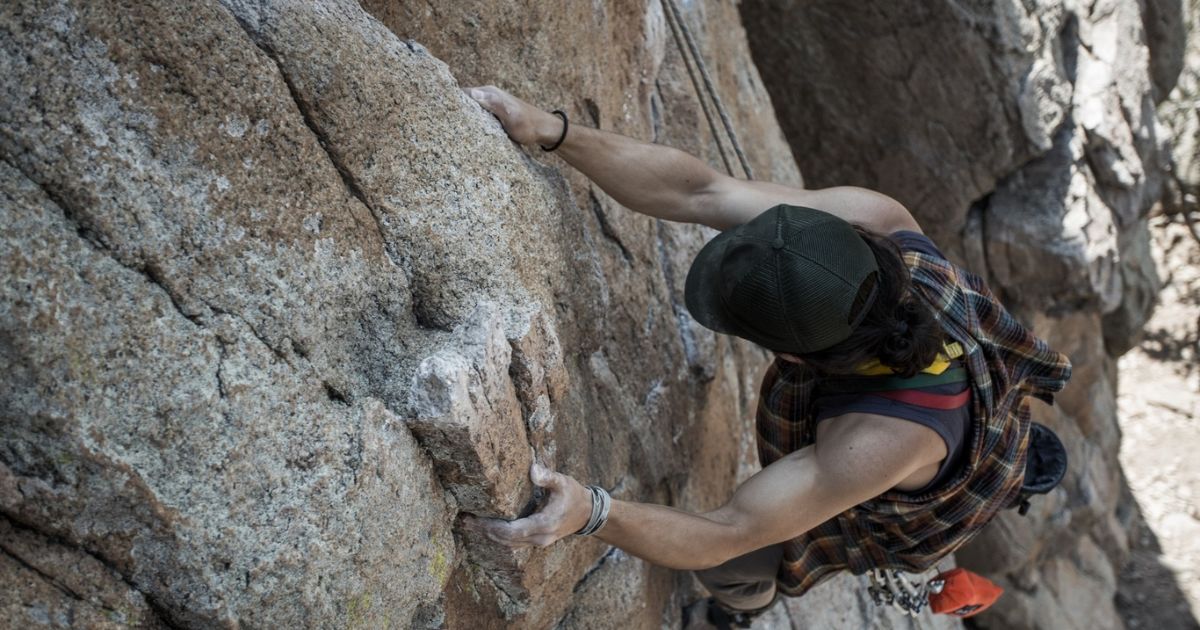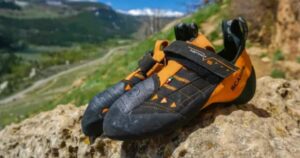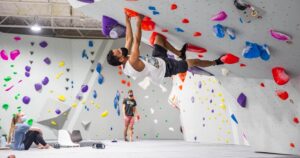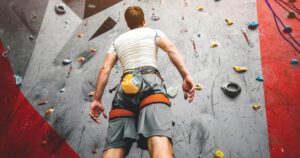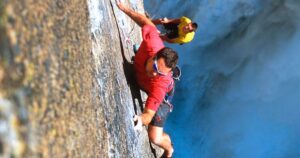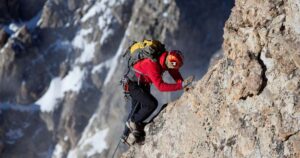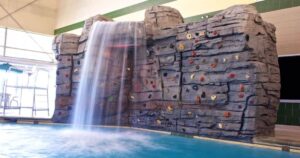In the world of climbing, the adage “find your footing” takes on a whole new meaning when it comes to the technique known as smearing. This technical and highly effective method involves using friction to adhere to the rock surface, allowing climbers to maintain balance and progress on challenging routes. In this article, we will delve into the intricacies of smearing, explore the benefits it offers, and provide valuable tips for improving your smearing skills in order to enhance your climbing experience.
Key Takeaways
- Smearing involves using friction to adhere to rock surfaces and is essential on smooth, featureless surfaces.
- Different types of rock surfaces require specific smearing techniques such as stealth smearing, edging smear, and split smearing.
- Smearing allows climbers to use larger surface areas of their shoes for stability and is effective on smooth and polished rock surfaces with limited footholds.
- Common mistakes to avoid in smearing include placing the foot at the wrong angle, lack of weight distribution, and inadequate pressure on the smear, all of which can be improved through proper foot placement and practice.
The Basics of Smearing
The Basics of Smearing in Climbing, including techniques for “Climb Mount Everest,” involve using precise footwork and a small amount of friction to maintain balance and stability on smooth, featureless surfaces. Smearing techniques are essential for climbers when faced with rock surfaces that lack significant holds or features. Different types of rock surfaces require specific smearing techniques to maximize grip and stability. On slabs, climbers often rely on the friction generated by smearing their climbing shoes against the rock surface.
This involves spreading weight evenly across the foot and maintaining a constant downward pressure. On smoother surfaces, climbers may need to use a combination of smearing and edging techniques to maintain control. To incorporate smearing into your climbing training routine, focus on footwork exercises that improve balance, precision, and the ability to generate friction. Practicing smearing techniques regularly will enhance your overall climbing skills and allow you to tackle a wider range of rock surfaces with confidence.
Techniques for Effective Smearing
Effective smearing techniques in climbing require precise foot placement and controlled weight distribution to maximize grip and stability on smooth, featureless surfaces. To enhance your smearing skills, here are three advanced techniques to consider:
- Stealth Smearing: This technique involves placing the entire sole of your climbing shoe on the rock surface, evenly distributing your weight, and engaging your core muscles to maintain balance. It is particularly useful on slab climbs or when dealing with slick, polished rock.
- Edging Smear: When smearing on edges or small footholds, focus on applying pressure to specific points of contact. By using the outer edge of your shoe, you can increase friction and maintain control on narrow surfaces.
- Split Smearing: This technique is employed when smearing on different types of rock surfaces simultaneously. It involves utilizing both the inside and outside edges of your climbing shoe to create friction and stability on uneven terrain.
Mastering these advanced smearing techniques will greatly improve your climbing abilities and allow you to tackle a variety of rock surfaces with confidence.
Now, let’s explore the benefits of smearing in climbing…
Benefits of Smearing in Climbing
Smearing in climbing offers climbers numerous advantages, making it a valuable technique to master. When compared to edging, smearing involves using friction between the sole of the climbing shoe and the rock surface to maintain balance and stability. Unlike edging, which relies on small footholds and sharp edges, smearing allows climbers to use larger surface areas of their shoes to distribute their weight and increase stability.
This technique is particularly useful on smooth and polished rock surfaces where there may be limited or no footholds available. Smearing can also be effective on slabs, where the rock is less steep, as it allows climbers to maintain contact with the rock and prevent slipping. By understanding the differences between smearing and edging, climbers can adapt their techniques to various types of rock surfaces and enhance their climbing abilities.
Common Mistakes to Avoid in Smearing
Climbers should be mindful of certain errors to steer clear of when employing the smearing technique in order to maximize their climbing performance. Proper foot placement is crucial for a successful smear, and avoiding these common mistakes can help climbers improve their technique:
- Incorrect Angle: Placing the foot at the wrong angle on the rock surface can decrease friction and stability. It is important to align the foot parallel to the rock, ensuring maximum contact and grip.
- Lack of Weight Distribution: Failing to distribute weight evenly across the foot can result in slips and loss of balance. It is essential to maintain a balanced stance and evenly distribute weight to maximize friction.
- Inadequate Pressure: Insufficient pressure on the smear can lead to decreased friction and reduced grip. Applying the right amount of pressure with the foot can help climbers maintain stability and control.
Tips for Improving Your Smearing Skills
To enhance your smearing abilities, consider incorporating advanced footwork techniques into your climbing repertoire. Footwork drills can significantly improve your balance and precision on the rock, allowing you to maximize the effectiveness of smearing. One effective drill is the “silent feet” exercise, where you focus on placing your feet quietly and precisely on holds, emphasizing proper weight distribution and minimizing unnecessary movement.
Another drill involves practicing smearing on different types of rock, such as granite, limestone, or sandstone, to develop a feel for the varying textures and friction levels. Experimenting with different angles and pressures can help you understand how to adapt your foot placement on different surfaces. By diligently practicing these footwork techniques and exploring smearing on diverse rock types, you can enhance your climbing skills and become a more confident and efficient smearer.
Frequently Asked Questions
What Kind of Shoes Should I Wear for Smearing in Climbing?
When engaging in the smearing technique in climbing, it is important to wear shoes that provide optimal grip and flexibility. Look for shoes with a sticky rubber sole and a snug fit to enhance stability and precision.
Are There Any Specific Foot Placements to Avoid While Smearing?
When smearing in climbing, it is important to avoid placing your feet on loose or slippery surfaces. Proper technique involves finding solid footholds or using the friction of the shoe rubber against the rock.
How Can I Prevent My Feet From Slipping While Smearing on Slippery Surfaces?
To prevent foot slipping while smearing on slippery surfaces, climbers can employ various techniques for improving their smearing skills. These techniques include maintaining proper body position, using proper foot placement, and developing strong leg muscles for better stability.
Is Smearing More Effective on Certain Types of Rock or Surfaces?
Smearing, a technique in climbing, varies in effectiveness depending on the type of rock or surface. When it comes to granite, smearing can be more effective due to its textured nature. However, on smoother sandstone, smearing may be less effective.
Can Smearing Be Used in Both Indoor and Outdoor Climbing?
Smearing, a technique used in climbing, can be employed in both indoor and outdoor settings. In indoor climbing, the advantages of smearing include increased stability and balance. Techniques for smearing on different types of holds vary depending on the surface texture and angle.
Conclusion
In conclusion, smearing in climbing is a technique that involves using friction between the climbing shoe and the rock to maintain balance and stability. By distributing weight evenly across the foot and finding the right angle and pressure, climbers can confidently navigate smooth or featureless surfaces. Smearing is an essential skill for climbers as it allows them to tackle difficult sections with limited handholds or footholds. By practicing proper technique and avoiding common mistakes, climbers can improve their smearing abilities and enhance their overall climbing performance.
